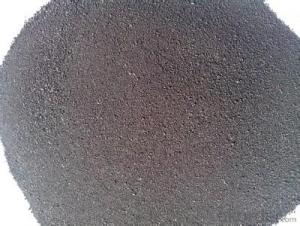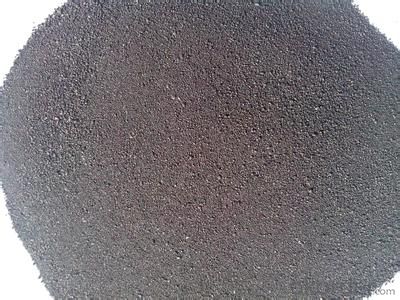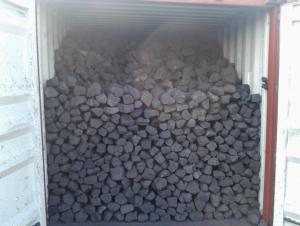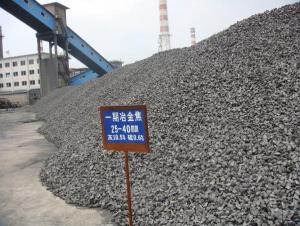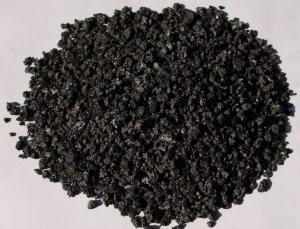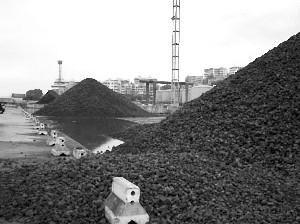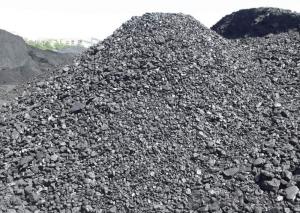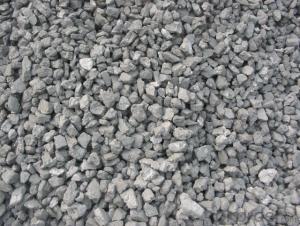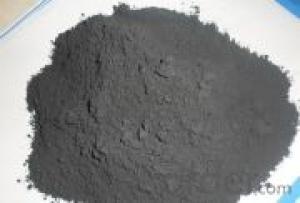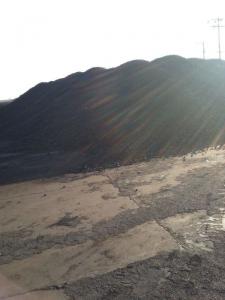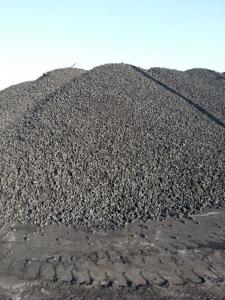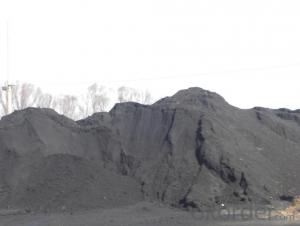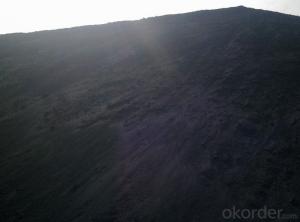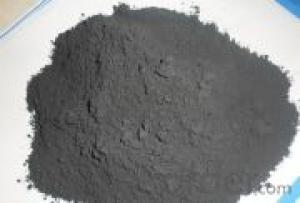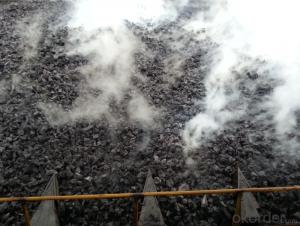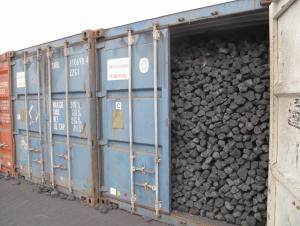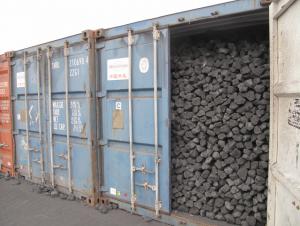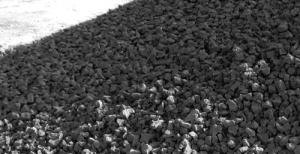COKE BREEZE of 0-10 mm
- Loading Port:
- China Main Port
- Payment Terms:
- TT OR LC
- Min Order Qty:
- -
- Supply Capability:
- -
OKorder Service Pledge
OKorder Financial Service
You Might Also Like
Our company began to export coke when China cancelled 40% of coke export tariffsand quotas on January 1, 2013.
We export many kinds of coke, such as metallurgical coke (met coke) of 30-80mm, the NUT coke of 10 to 30 mm, coke breeze of 0 to 10 mm, and so on.
Parameters | Ash(DB) | (ARB)
| Volatile Matter (DB) | Fix Carbon (DB) | Size 0-10mm
|
+10mm |
Guarantee | 12.5%max | 15%max | 1.5%max | 83%min | 90%min | 5%max |
At present, the main customers are NOBLE GROUP, IMR and so on. Our main overseasmarkets are Japan, India, Brazil, Iran, Vietnam, and so on.
Should any of these items be of interest to you, please let us know. We will behappy to give you a quotation upon receipt of your detailed requirements.
- Q: Various types of coal coke are the main test items
- Coal test items which specific indicators of coal test:Generally include coal test indicators include: calorific value of coal (calorific value), sulfur content (sulfur), ash, volatile, fixed carbon, char residue characteristics, total moisture, water analysis and other indicators
- Q: The chemical composition of coke is m10.m25
- Quality index of cokeThe quality index of coke coke [] is a solid product of high temperature carbonization, the main ingredient is carbon, is the pore structure has a crack and irregular (or pore porous). The crack number directly affects the coke strength and crushing strength, the index of general degree (refer to how to crack crack length unit the volume of coke in the measure.) to measure the pore structure of the main indicators for the porosity (coke pore volume only percentage of the total volume) that it affects the coke reactivity and strength
- Q: F.C Ash S V.M H2O SizeMore than 85 less than 15 less than 8 less than 0.8 less than 1.5 10-70mm over 90%,I would like to ask, what is the size of the corresponding coke? Metallurgical coke or something else, there is no relevant information about, thank youF.C = 85, Ash = 15, H2O = 8, S = 0.8, V.M = 1.5, Size:10-70mm 90% and above, so clear, like the product, the current price?
- Two metallurgical coke: fixed carbon 84.5-85%; calorific value 7000cal/kg; ash < 13.5%; volatile < 1.9%; all 6% "0.7%" water; sulfur;
- Q: Why does Coke provide heat when it is fired, it reacts only at high temperatures and why it is needed to provide heat?Which is the exothermic reaction, carbon dioxide or carbon monoxide?
- In addition to the reaction of iron and iron oxide will react C+O2=CO2; reaction exothermic;
- Q: What is the use of coke
- From the distribution of coke production in China, the distribution of coking enterprises in China is unbalanced, which is mainly distributed in North China, East China and northeast china. Three, the use of coke coke is mainly used in blast furnace ironmaking and copper, lead, zinc, titanium, antimony, mercury and other non-ferrous metal smelting furnace, reducing agent, heating agent and the role of the material column skeleton. The use of coke instead of charcoal in the blast furnace has laid the foundation for the large-scale development of modern blast furnaces and is a major milestone in the history of metallurgy. In order to achieve better technical and economic indexes of blast furnace operation, the coke (metallurgical coke) must have proper chemical and physical properties. In addition to a large number of coke used in iron smelting and non-ferrous metal smelting (metallurgical coke), but also for casting, chemical, calcium carbide and iron alloy, the quality requirements are different. Such as foundry coke, generally require large size, low porosity, high fixed carbon and low sulfur; chemical gasification, strict requirements for strength, but requires good response, high ash melting point; calcium carbide and coke production requirements to improve the fixed carbon content.
- Q: What is the essential difference between coal and coke?
- Coke]Coke is bituminous coal in the absence of air is heated to 950-1050 DEG C, after drying, pyrolysis, melting, bonding, curing and contraction of the final stage is made, the process is called high temperature coking (high temperature carbonization). Coke obtained from high temperature coking for blast furnace smelting, casting and gasification. Coke oven gas produced in the process of coking and recovery is not only a high calorific value of fuel, but also an important industrial raw material for organic synthesis.Coke is mainly used in blast furnace ironmaking and smelting of non-ferrous metals such as copper, lead, zinc, titanium, antimony, mercury and so on. The use of coke instead of charcoal in the blast furnace has laid the foundation for the large-scale development of modern blast furnaces and is a major milestone in the history of metallurgy. In order to achieve better technical and economic indexes of blast furnace operation, the coke (metallurgical coke) must have proper chemical and physical properties. In addition to a large number of coke used in iron smelting and non-ferrous metal smelting (metallurgical coke), but also for casting, chemical, calcium carbide and iron alloy, the quality requirements are different. Such as foundry coke, generally require large size, low porosity, high fixed carbon and low sulfur; chemical gasification, strict requirements for strength, but requires good response, high ash melting point; calcium carbide and coke production requirements to improve the fixed carbon content.
- Q: The chemical composition of coke m10.m25 refers to?
- M10 refers to the wear resistance of coke, M25 refers to the crushing strength is the mechanical strength. Mainly the cold strength of coke. Coke is also the most important indicator is the hot state, CRI thermal reaction and CSR reaction intensity. In blast furnace production, both cold and thermal strength are important.
- Q: What is coke and how is coke classified?
- Types of cokeCoke is usually divided by use of metallurgical coke (including blast furnace coke, coke and iron alloy coke, calcium carbide and coke gasification etc.) with coke. The pressurized pulverized coal forming coal, coke carbonization etc. in the new postprocessing process called Formcoke.
- Q: What is the effect of coke moisture on the blast furnace?
- 1, a large number of high coke moisture (when the rain open storage of coke in blast furnace smelting coke), if not timely load back down, will cause a relatively large impact on the furnace, coke is better then no timely adjusting load will cause heat phenomenon.
- Q: What is the difference between coke and coking coal
- Metallurgical coke is coke, coke, iron alloy coke and non-ferrous metal smelting coke for metallurgical coke collectively. More than 90% are used in blast furnace, the furnace coke often called metallurgical coke. Metallurgical coke quality standard Chinese formulation (GB/T1996-94) is the blast furnace quality standards.Gasification coke is a kind of coke, which is specially used in the production of gas. It is mainly used in the fixed bed coal gas producer with solid slag discharging. It is used as the raw material to produce CO and H2 gas
Send your message to us
COKE BREEZE of 0-10 mm
- Loading Port:
- China Main Port
- Payment Terms:
- TT OR LC
- Min Order Qty:
- -
- Supply Capability:
- -
OKorder Service Pledge
OKorder Financial Service
Similar products
Hot products
Hot Searches
